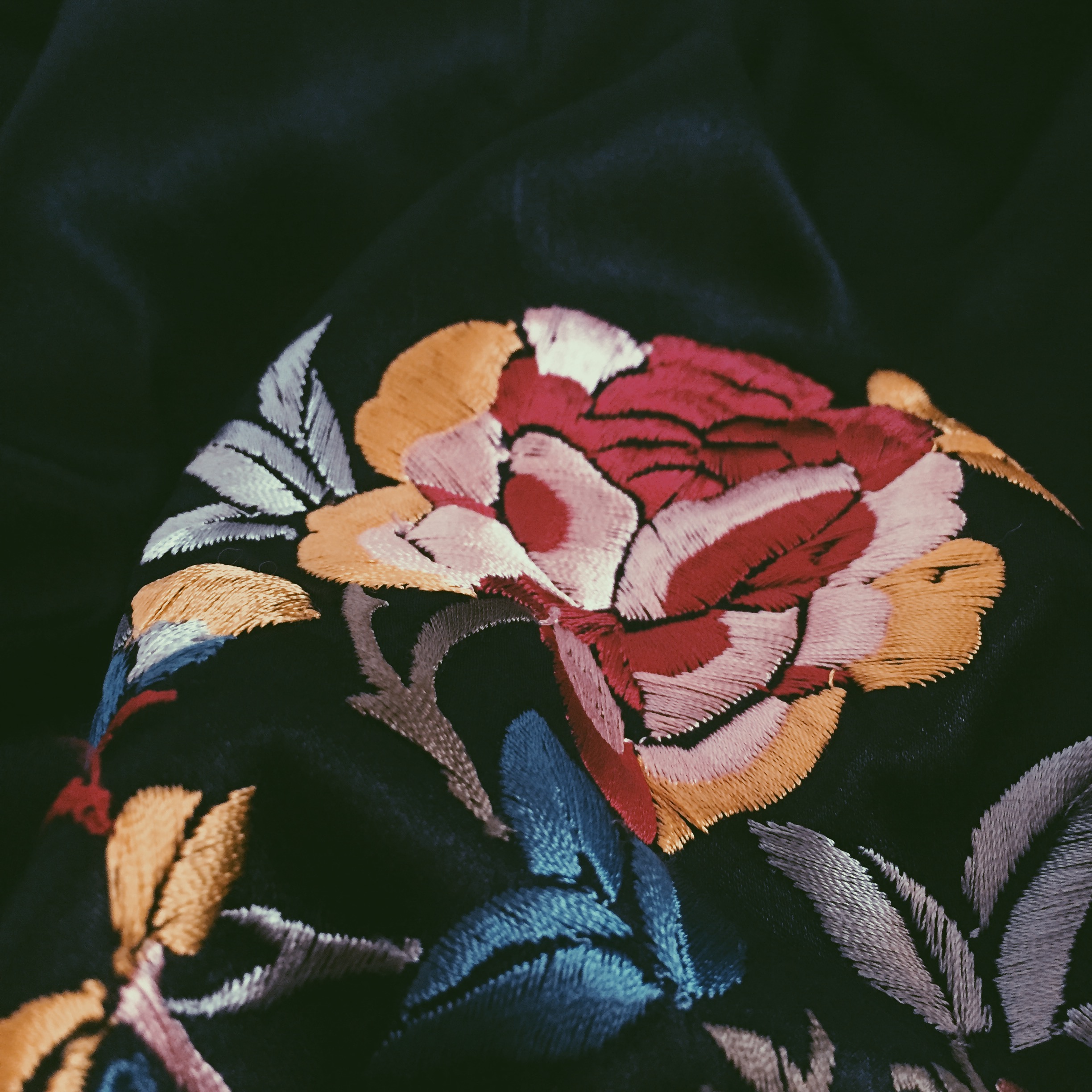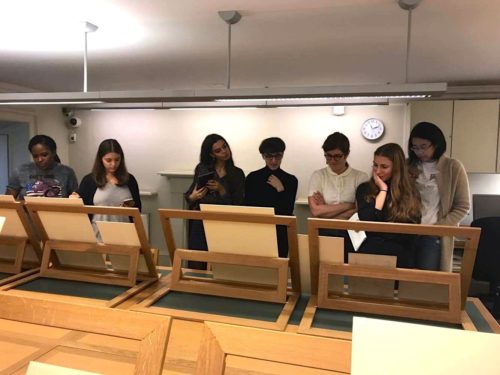Niall is a Courtauld MA Student currently on Rebecca Arnold’s Documenting Fashion course, about to graduate in July. During our end-of-year class trip to Kew Gardens, I caught up with him about his style.
Describe what you are you wearing today?
I’m wearing a black turtleneck with black trousers, a black blazer, and a black umbrella to keep away the summer sun.
Does your style differ depending on where you are?
I literally wear a black turtleneck and high waisted black trousers everywhere, even at home.

How would you describe your style?
I would describe my style by saying, “I’m going to the opera at 7, and I’m meeting my Coven at 11.” That’s how I would describe it, especially because in the Winter I have this big, black faux-fur coat, and I tend to wear velvets a lot. I feel like my approach to style is very Minimalist because the basis of what I wear is very plain and I wear the same things everyday, but then I also have more extravagant items as well which add a little touch. Because I love texture, I like velvets, satins, lace and silk, so I’ll wear those fabrics sometimes. I actually was going to wear black lace gloves today, too.
Have you always dressed like this?
No, I haven’t. I used to wear colour but then I felt really self conscious and it made me feel like I stood out, and then I started to wear all black — just because I think it looks best on my skin tone and my hair.

Do you remember an early fashion memory?
When I was four of five I would wear every single day the same red Postman Pat t-shirt with black trousers and the same pair of white trainers. I wore them everyday, until the shoes fell apart and the t-shirt had holes in, which I think is interesting because now I wear the same thing everyday as well.
Are you associated with the word ‘uniform’?
Yes, I like to wear a uniform because it makes me feel like I always look put together. It takes so much time out of the morning… I never have to be self conscious about what I’m wearing. I found my uniform just by accident because I ended up just naturally gravitating towards things that I felt the most comfortable in and the things that I feel like I looked best in. Because I wear the same thing everyday, I never have to worry about whether it looks nice or not, and can just throw something on and have it always look put together.

Do you have any favourite accessories?
One item that I wear a lot is my black and purple velvet shawl. It’s more of a Wintery thing, but I like that its kind of witchy. I got it after I went to see Stevie Nicks in the Summer Hyde Park concert, so obviously have a fond memory of it.
Can you note any inspiration for your style?
A big inspiration for me was a picture of Audrey Hepburn. Its a studio portrait of her and she’s in a black top with high waisted black trousers which are basically the same ones that I wear, and she’s got black ballet flats on. Another inspiration, honestly…. in the first two Harry Potter films, Professor McGonagall always wears a black turtleneck dress with a green velvet cape and a brooch around her neck. That was a big inspiration to me as well because I like vampiric, witchy things. And obviously American Horror Story’s Coven is a big aesthetic inspiration too. Stevie Nicks is also a style inspiration to me because she doesn’t strictly wear a uniform, but she’s always in all black, and she wears similar things to me.
All photographs taken by Niall











